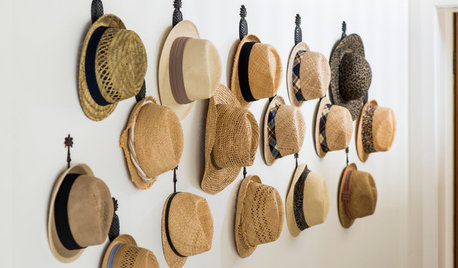How to get Pat to stand up straight?
KnoxRose z7
9 years ago
Related Stories

DECORATING GUIDESGet Patterns Down Pat: Working With Patterned Furniture
Time to perfect your accents. Learn how to use pattern on furniture pieces to totally transform your rooms
Full Story
HOME OFFICESStand-Up Desks Rise to Health Challenges
Sitting all day may be wrecking your health. Are you going to stand for that?
Full Story
CONTEMPORARY HOMESHouzz Tour: Strong, Modern Lines Stand Up to the Trees
Modernism takes kindly to the New York woods, with double-height ceilings for openness and a burbling creek for music
Full Story
GARDENING AND LANDSCAPINGBeachfront Garden Stands Up to the Elements
A sophisticated outdoor entertaining space relies on tough plants and resilient materials to bring indoor living outside
Full Story
FUN HOUZZIndoor Slides Make Getting There All the Fun
Take a straight shot between floors or twist up your ride with a spiral. An indoor slide puts the playground right at your feet
Full Story
FUN HOUZZ14 Gardens Straight Out of Fairy Tales
Escape into landscapes that conjure the magical worlds of folklore and literature
Full Story
LIVING ROOMSNew This Week: 3 Sunrooms Straight Out of Our Dreams
Heated floors, comfy furniture and walls of windows make these recently uploaded sunrooms the places of our sun-drenched fantasies
Full Story
REMODELING GUIDESStraight From Spain: Amazing New Trends in Tile
Innovative Shapes, Patterns, and Textures Take Tile Beyond Kitchen and Bath
Full Story
HOUSEKEEPINGThree More Magic Words to Help the Housekeeping Get Done
As a follow-up to "How about now?" these three words can help you check more chores off your list
Full Story
STORAGEHat Storage: Don’t Get Bent Out of Shape
From boxes to hooks, we look at ways to keep your lid on straight in time for summer hat season
Full StoryMore Discussions











strawchicago z5
Related Professionals
Danbury Landscape Architects & Landscape Designers · Glen Ellyn Landscape Architects & Landscape Designers · Salisbury Landscape Architects & Landscape Designers · Summit Landscape Architects & Landscape Designers · Aurora Landscape Contractors · Salem Landscape Contractors · Tempe Landscape Contractors · Bridgeview Landscape Contractors · Fair Lawn Landscape Contractors · Fort Mill Landscape Contractors · Haverhill Landscape Contractors · McLean Landscape Contractors · Munster Landscape Contractors · North Potomac Landscape Contractors · Seymour Landscape Contractors